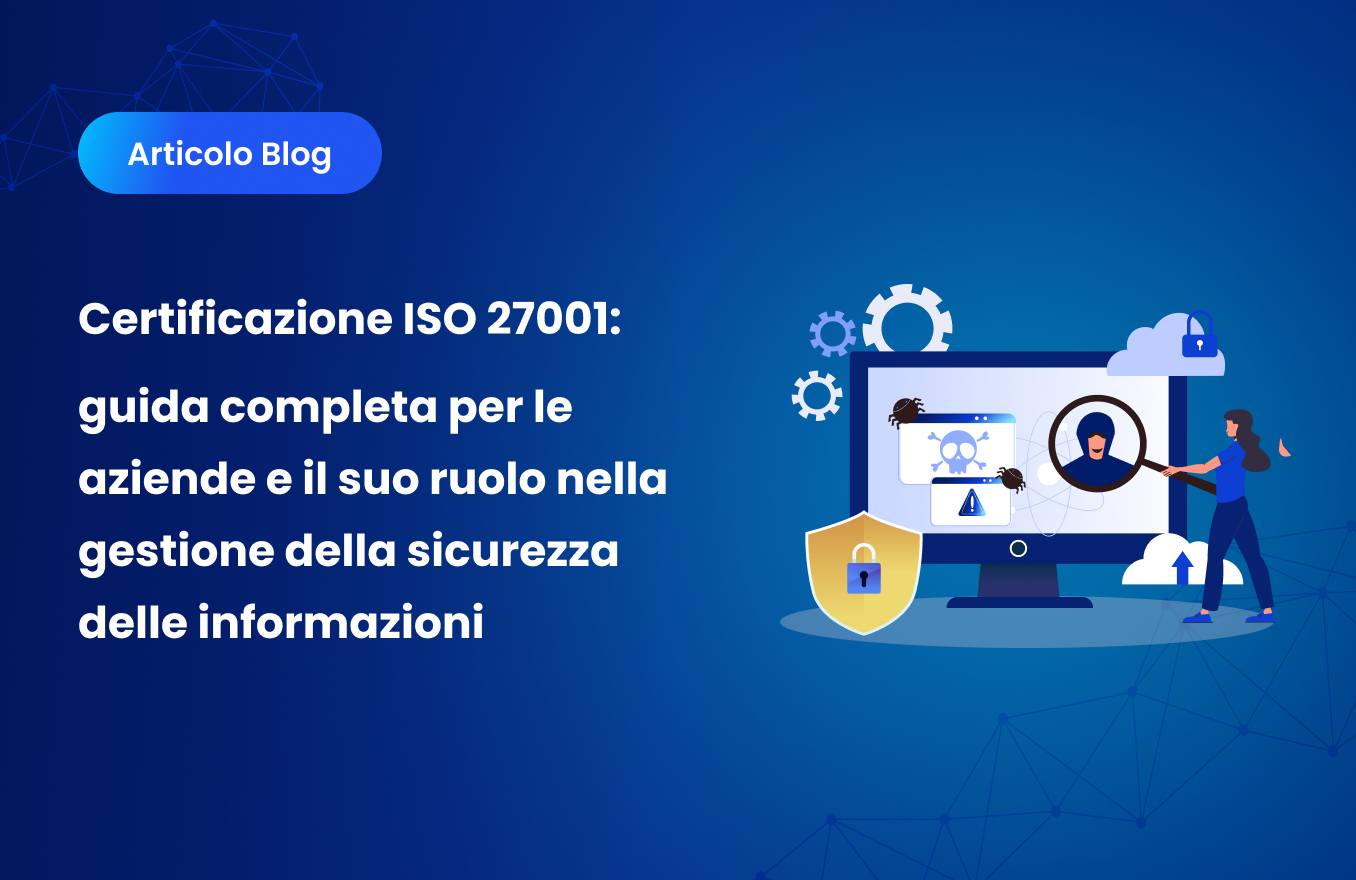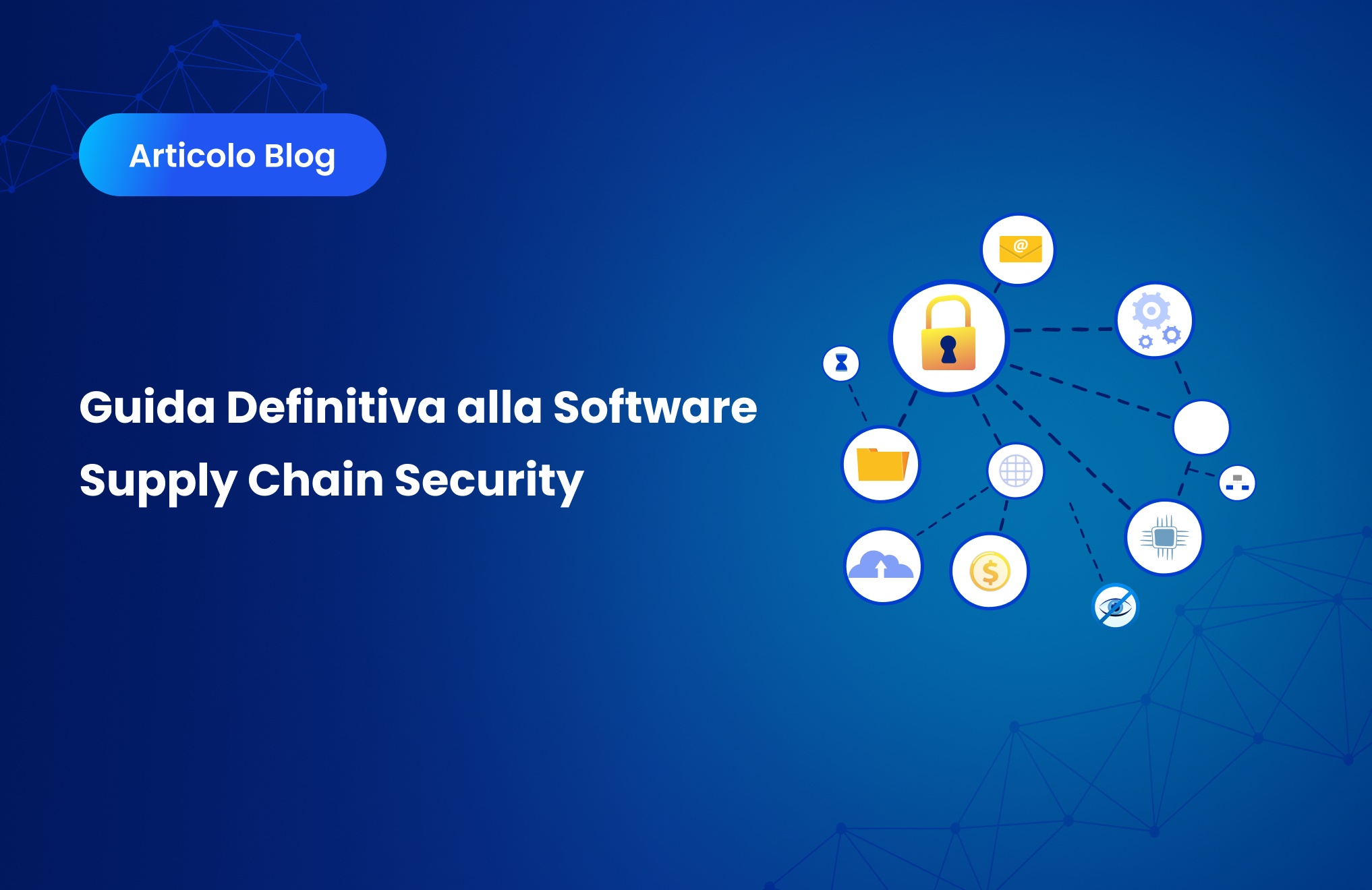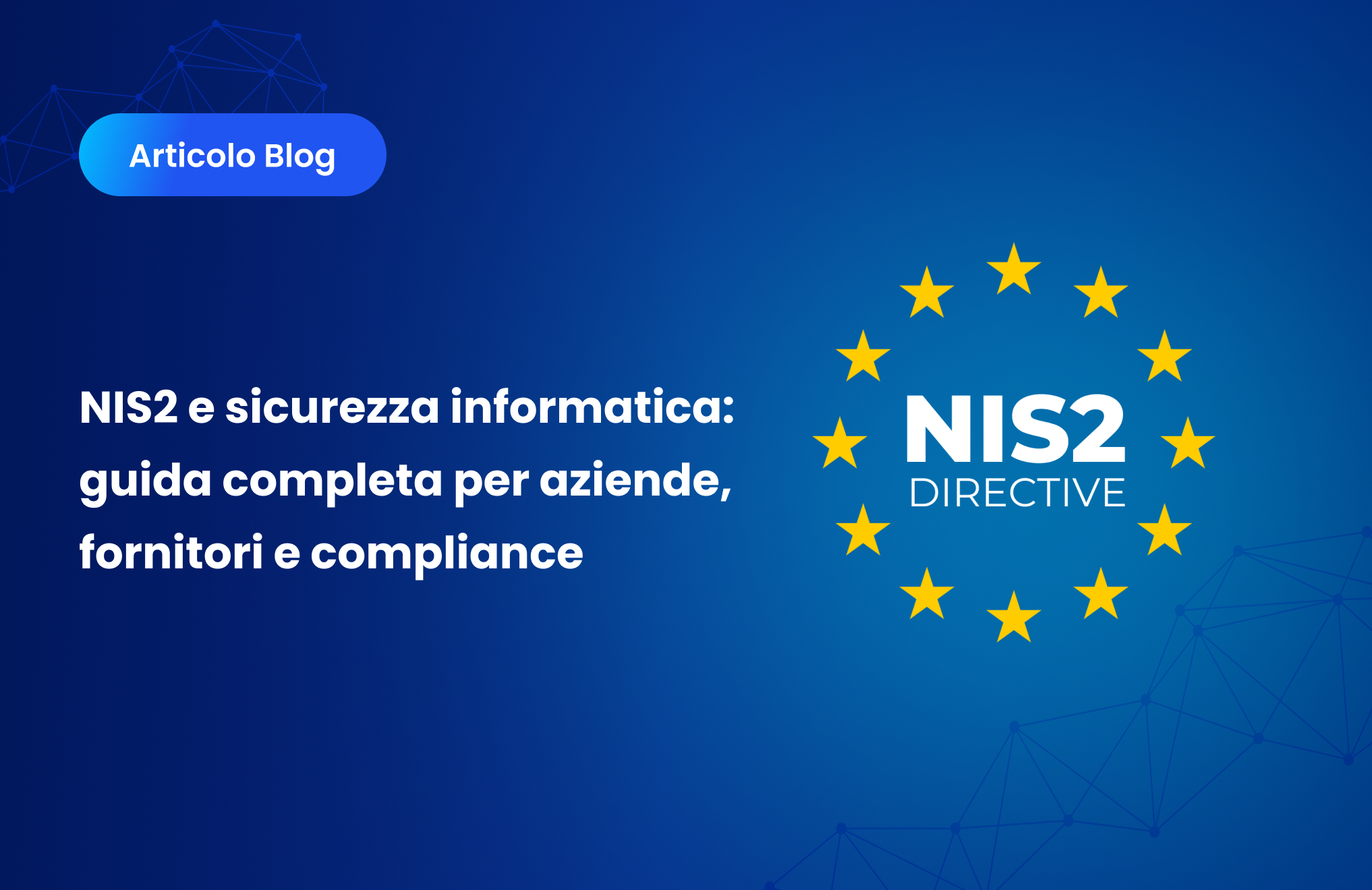Ridurre al minimo la superficie di attacco dell'organizzazione: una guida completa

Nel mondo digitale di oggi, le organizzazioni grandi e piccole fanno molto affidamento su sistemi e infrastrutture online per eseguire le proprie operazioni. Tuttavia, questa maggiore dipendenza dalla tecnologia amplia anche l'impronta digitale di un'organizzazione ed espone ulteriori potenziali vulnerabilità che gli aggressori informatici possono sfruttare. Questa impronta digitale, nota come superficie di attacco dell'organizzazione, comprende tutto, dai siti Web e server rivolti al pubblico agli endpoint dei dipendenti e ai servizi cloud. Poiché le superfici di attacco continuano a crescere, i team addetti alla sicurezza hanno sempre più difficoltà a mantenere visibilità e controllo adeguati nei loro ambienti.
Secondo alcune stime, la superficie di attacco aziendale media globale contiene oltre 2.000 asset visibili esternamente. Senza una governance adeguata, questo numero tende ad espandersi rapidamente man mano che le aziende intraprendono iniziative di trasformazione digitale e adottano nuove tecnologie. Più risorse e più connessioni introducono anche più potenziali vulnerabilità che gli aggressori possono sfruttare. Il Data Breach Investigations Report 2021 di Verizon ha rivelato che gli attacchi esterni sono ora la principale fonte di incidenti di sicurezza e rappresentano l'85% delle violazioni analizzate. Man mano che le minacce diventano più sofisticate e gli attacchi più mirati, ridurre al minimo la superficie di attacco deve diventare un imperativo strategico per le organizzazioni che apprezzano la sicurezza dei propri dati.
In questa guida completa, esploreremo cos'è una superficie di attacco, come si sta espandendo e, soprattutto, come le organizzazioni possono ridurre la loro esposizione attraverso il rilevamento, il monitoraggio e la correzione continui nei loro ambienti.
Cos'è una superficie di attacco?
Nella sicurezza informatica, il termine «superficie di attacco» si riferisce alla somma totale dei punti in cui un utente o un aggressore non autorizzato può tentare di entrare, accedere o estrarre dati da un ambiente. Comprende tutte le vulnerabilità e i punti deboli esposti nelle persone, nei processi e nella tecnologia di un'organizzazione che potrebbero essere sfruttati per causare danni.
Alcuni elementi che compongono una superficie di attacco includono:
- Infrastruttura di rete - Server, endpoint, dispositivi mobili, servizi di rete, porte aperte, architettura di rete interna ecc.
- Applicazioni - Siti Web rivolti al pubblico, API, applicazioni aziendali, database esposti.
- Servizi cloud - Bucket di archiviazione, funzioni, configurazioni, autorizzazioni, integrazioni con sistemi on-premise.
- Utenti e account - Dipendenti, appaltatori/partner, account privilegiati, controlli di accesso impropri.
- Risorse fisiche - Laptop/telefoni per dipendenti, supporti rimovibili, carta/documenti.
Qualsiasi risorsa accessibile dall'esterno delle reti e dei sistemi interni sicuri dell'organizzazione costituisce parte della superficie di attacco. Più ampia è questa superficie, maggiori sono le opportunità per gli aggressori di accedervi, violare le difese ed esfiltrare dati sensibili. Ecco perché ridurre al minimo la superficie di attacco è fondamentale per la sicurezza.
In che modo la trasformazione digitale espande le superfici di attacco
Le iniziative di trasformazione digitale volte a incrementare l'efficienza, l'agilità e la connettività hanno portato le aziende ad adottare rapidamente servizi cloud, nuove tecnologie e partnership con terze parti. Tuttavia, questa espansione dell'impronta digitale ha anche creato nuove sfide di sicurezza:
Altre connessioni esterne
- L'adozione di app SaaS, cloud IaaS e PaaS collega senza server sistemi e dati interni a provider esterni al di fuori dei firewall dell'organizzazione.
- Le API consentono l'integrazione con servizi di terze parti ma aumentano il rischio se non sono adeguatamente protette.
- Le politiche BYOD aumentano la produttività ma riducono il controllo sugli endpoint.
- Gli ecosistemi dei fornitori introducono l'esposizione al rischio di terze parti.
Altri utenti e account
- Il lavoro remoto/ibrido amplia l'accesso dall'esterno delle reti aziendali.
- La crescita porta alla gestione di più account utente con accesso ai dati.
- Gli account privilegiati per il personale IT e le console di amministrazione aumentano il rischio di minacce interne.
Ambienti complessi e dinamici
- Gli ambienti multi-cloud creano punti ciechi di gestione su diverse console.
- Gli aggiornamenti frequenti delle app native per il cloud comportano configurazioni errate.
- La mancanza di inventario degli asset rende difficile tenere traccia delle risorse transitorie.
- L'attività di M&A si ripiega in aziende con posizioni di sicurezza sconosciute.
Questa espansione introduce più risorse, utenti, privilegi, tecnologie e connessioni, ognuna delle quali rappresenta un altro potenziale bersaglio per gli aggressori. Senza ridurre al minimo la crescente superficie di attacco, è improbabile che le organizzazioni tengano a bada le minacce.
5 strategie fondamentali per ridurre la superficie di attacco
Proprio come la trasformazione digitale ha aumentato l'impronta tecnologica e ampliato la superficie di attacco, è necessaria una trasformazione proattiva della sicurezza per consolidare le esposizioni e implementare la governance. Ecco le 5 strategie e funzionalità chiave necessarie:
1. Scopri la tua superficie di attacco esterna
Il primo passo è ottenere una visibilità completa sulla tua impronta digitale rivolta verso l'esterno. Non è possibile proteggere ciò che non si può vedere, quindi è fondamentale una scoperta continua sulla superficie di attacco aziendale e sulla catena di fornitura. Funzionalità di base necessarie:
Scoperta delle risorse - Utilizza la scansione e l'analisi automatizzate per identificare tutte le risorse rivolte a Internet associate alla tua organizzazione e alla tua catena di fornitura. Mantieni un inventario sempre aggiornato.
Classificazione degli asset - Non tutte le risorse sono uguali, quindi una classificazione intelligente identifica le criticità e le funzioni aziendali. Ciò consente l'assegnazione delle priorità in base al rischio dei risultati della scoperta.
Analisi della superficie di attacco - Visualizza la portata della tua superficie di attacco esterna e analizza i cambiamenti nel tempo determinati da iniziative aziendali, fusioni e acquisizioni o altre attività di espansione.
Copertura della catena di fornitura - Espandi la scoperta oltre il tuo ambiente per identificare anche le esposizioni derivanti da terze parti, fornitori, filiali e partnership.
2. Comprendi il tuo livello di esposizione
Una volta che puoi vedere la tua superficie di attacco, devi analizzare le esposizioni e le vulnerabilità dal punto di vista di un aggressore. L'identificazione dei punti deboli e delle configurazioni errate consente di assegnare priorità intelligenti ai problemi in base alla sfruttabilità. Le funzionalità principali includono:
Modellazione dell'esposizione - Sfrutta un framework che analizza vulnerabilità, configurazioni errate, software obsoleto, minacce prive di patch e altri fattori di rischio esterni specifici per ogni risorsa.
Monitoraggio continuo - La modellazione dell'esposizione fornisce informazioni puntuali sullo stato attuale dei rischi e dei cambiamenti nel tempo. Il monitoraggio automatico riduce la dipendenza da valutazioni puntuali.
Analisi contestuale - Non tutte le vulnerabilità presentano lo stesso rischio. Le analisi forniscono informazioni contestuali basate sulla gravità, sugli asset interessati e sui punti deboli sfruttabili per consentire l'assegnazione delle priorità dei problemi in base al rischio.
Copertura olistica - Espandi la modellazione oltre il tuo ambiente per monitorare anche le esposizioni derivanti da terze parti, fornitori, filiali e partnership.
3. Assegna priorità alla correzione utilizzando l'analisi dei rischi
Il passo successivo è agire sulle vulnerabilità esposte prima che gli aggressori possano sfruttarle. Con centinaia o addirittura migliaia di potenziali problemi, l'assegnazione intelligente delle priorità basata sull'analisi del rischio è fondamentale. Le funzionalità critiche includono:
Prioritizzazione basata sul rischio - Combina fattori come l'importanza degli asset, la gravità della vulnerabilità e la sfruttabilità per concentrare la riparazione sulle esposizioni che presentano un impatto potenziale e una probabilità di compromissione più elevati.
Analisi comparativa e delle tendenze - Confronta l'esposizione con le tendenze storiche e le organizzazioni di pari livello per comprendere meglio le prestazioni nel contesto aziendale. L'ambiente sta diventando più sicuro o meno nel tempo?
Gestione delle riparazioni - Fornisci ai team addetti alla correzione le informazioni necessarie per formulare piani di risposta basati sui dati. Mantieni la supervisione sullo stato degli sforzi di riparazione.
Coordinamento dei rischi dei fornitori - Per i rischi di terze parti, coordinatevi con i fornitori esterni per comprendere e porre rimedio alle esposizioni vulnerabili derivanti dai loro ambienti.
4. Riduci la tua impronta digitale
Oltre a porre rimedio alle esposizioni identificate, le organizzazioni devono anche implementare pratiche fondamentali per ridurre al minimo la superficie di attacco riducendo porte, servizi, protocolli non sicuri e altre espansioni dell'impronta digitale non necessari. Le funzionalità principali includono:
Accesso con privilegi minimi - Implementa i principi zero trust e applica le autorizzazioni con privilegi minimi per tutti gli utenti, gli account, i ruoli, le applicazioni e i componenti dell'infrastruttura.
Smaltimento degli asset inutilizzati - Gestisci attivamente un inventario di tutte le risorse e disattiva regolarmente porte, servizi, applicazioni, dispositivi e account non necessari non più utilizzati dall'azienda.
Segmentazione della rete - Utilizza VLAN, sottoreti, microsegmentazione e regole interne del firewall per limitare i movimenti laterali e limitare l'accesso nell'ambiente in caso di violazione.
Blocco del protocollo - Disabilita i protocolli di accesso remoto obsoleti e non sicuri come Telnet/SSHv1 e applica protocolli sicuri moderni come SSHv2 per qualsiasi accesso amministrativo remoto richiesto.
5. Incorpora la visibilità della superficie di attacco nella governance della sicurezza
La gestione della superficie di attacco non è un progetto una tantum: richiede la definizione di una governance continua basata su metriche attuabili. Le funzionalità chiave per il successo includono:
Rapporti esecutivi - Fornire ai dirigenti e ai membri del consiglio di amministrazione report che dimostrino la maturità del programma di gestione della superficie di attacco, i progressi nella riduzione delle esposizioni, i confronti dei benchmark e l'impatto degli investimenti.
Quantificazione del rischio - Collega gli investimenti e gli sforzi di bonifica con metriche che mostrano una forte riduzione dell'esposizione al rischio aziendale nel tempo. Dimostra il ROI.
Validazione continua - Incorpora il rilevamento della superficie di attacco e l'analisi dell'esposizione nei programmi esistenti di gestione delle vulnerabilità, test di penna e garanzia della conformità per una convalida continua.
Allineamento della roadmap di sicurezza - Garantire che le attività di gestione e riduzione della superficie di attacco siano allineate e supportino le strategie di sicurezza generali, le roadmap e i modelli di maturità adottati dall'organizzazione.
Implementazione di un programma di gestione della superficie di attacco
Con le giuste strategie e soluzioni, le organizzazioni possono implementare programmi di gestione della superficie di attacco completamente maturi che offrono la visibilità, il controllo e la riduzione dei rischi richiesti dagli ambienti complessi di oggi. Gli elementi chiave per il successo includono:
Visibilità completa degli asset e delle esposizioni
- Mantieni un inventario sempre aggiornato delle risorse rivolte a Internet tramite una scansione automatica continua.
- Monitora l'esposizione nel tuo ambiente e nell'ecosistema di terze parti.
- Analizza l'espansione della superficie di attacco nel tempo guidata da iniziative aziendali.
Prioritizzazione delle riparazioni basata sul rischio
- Modella le vulnerabilità esterne dal punto di vista della sfruttabilità degli aggressori.
- Quantifica i rischi effettivi in base al contesto degli asset e ai dettagli delle vulnerabilità.
- Consenti ai team addetti alla bonifica di concentrarsi innanzitutto sulla correzione delle esposizioni a rischio più elevato.
Governance efficace della sicurezza
- Informa le roadmap e la pianificazione della sicurezza con l'intelligence sulla superficie di attacco.
- Riporta le metriche per dimostrare la riduzione del rischio nel tempo.
- Migliora i programmi esistenti incorporando informazioni sulla superficie di attacco nei principali flussi di lavoro.
Copertura olistica su tutti i vettori
- Monitora i fattori di rischio della superficie di attacco come vulnerabilità, configurazioni errate, software obsoleto, sistemi compromessi ed esposizioni di dati non protette.
- Mantieni la visibilità su tutte le impronte digitali esterne: web, social media, dark web, archivi di codice.
Automazione continua
- Scopri nuove risorse in tempo reale man mano che vengono fornite.
- Modella le esposizioni costantemente senza fare affidamento su valutazioni puntuali.
- Ricevi avvisi quando si verificano eventi di elevata gravità che richiedono una risposta rapida.
Pensieri conclusivi
Il panorama delle minacce in costante evoluzione di oggi, unito all'accelerazione della trasformazione digitale, rende la riduzione al minimo della superficie di attacco dell'organizzazione fondamentale per la sicurezza. Implementando funzionalità complete di rilevamento, analisi e governance incentrate sulla riduzione delle esposizioni esterne, i team addetti alla sicurezza possono ottenere il controllo sui nuovi rischi introdotti con l'espansione dell'impronta tecnologica. Con le giuste strategie e soluzioni, puoi perseguire con sicurezza la crescita del business e l'adozione del cloud senza espandere le vulnerabilità della tua organizzazione. Ma la gestione della superficie di attacco non è un'iniziativa temporanea: richiede una visibilità continua, capacità di risposta basate sul rischio e una governance flessibile e scalabile nel tempo. Le aziende che integrano questi processi nelle proprie strategie e operazioni di sicurezza otterranno un importante vantaggio competitivo.
Conclusione
Questa guida ha spiegato cos'è una superficie di attacco, come si sta espandendo attraverso la trasformazione digitale e 5 strategie fondamentali necessarie per ridurre l'esposizione della tua organizzazione: 1) Scopri la tua superficie di attacco esterna 2) Comprendi il tuo livello di esposizione 3) Assegna priorità alla correzione utilizzando l'analisi del rischio 4) Riduci la tua impronta digitale 5) Incorpora la gestione della superficie di attacco nella governance. L'implementazione di funzionalità in ciascuna di queste aree come parte di un programma integrato di gestione della superficie di attacco è fondamentale per ridurre al minimo le vulnerabilità negli ambienti ibridi complessi di oggi. Con gli aggressori in costante evoluzione e mirati a colpire i punti deboli, ridurre la superficie di attacco dell'organizzazione deve diventare un imperativo strategico fondamentale.



.svg)
.svg)
.svg)
.svg)



.svg)
.svg)
.svg)
.svg)
.svg)
.svg)
.svg)
.svg)



